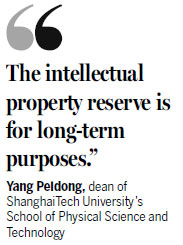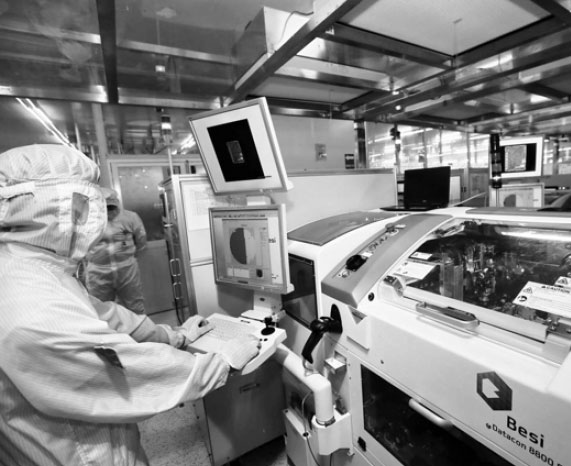Nano-tech industry demands originality, further investment
The number of Chinese patents and theses on nano-technology have topped the world, according to the 6th International Conference on Nanoscience and Technology held last week in Beijing.
"Nano-technology, information technology and biotechnology are some of the pillars of today's world of science and technology development," said Bai Chunli, president of the Chinese Academy of Sciences, at the opening ceremony of the conference.
He said China is one of the earliest starters in nano-technology research, and the number of related patents and theses have grown rapidly in recent years.
|
A technician at Foxconn's Nantong plant operates a production line for 12-inch 28-nm chips. Xu Congjun / For China Daily |
Liu Minghua, director of the National Center for Nanoscience and Technology, or NCNST, said at a forum during the conference that China has invested more than $1 billion in the field, ranking among the top worldwide.
Peking University was one of the first Chinese universities to carry out research on nano-technology. It started the Center for Nanoscale Science and Technology 20 years ago to conduct cross-field research involving the technology.
The university publishes more than 3,000 academic papers each year, nearly one-third of which are about nanoscience and technology, said Liu Zhongfan, head of the center.
"However, the numbers can be deceiving," Liu said. "Although China has invested much into nano-technology research, the investment has been decentralized, which means that the investment for each project is actually not much."

He added that many of the current projects in China concentrate on faddish areas, but there are few original research projects. He called for increasing attention to and investment in a number of original research projects of top importance.
Yang Peidong, dean of ShanghaiTech University's School of Physical Science and Technology, agreed with Liu.
"We not only need an increasing number of academic papers in the field of nanoscience and technology, but also should pay more attention to original research projects to create our own intellectual property," he said. "The intellectual property reserve is for long-term purposes."
The Chinese Academy of Sciences made some attempts to tackle the problems, one of which is the establishment of a nano-technology pioneer initiative in 2013, which integrates resources to "do influential research" in the area, said Bai.
He explained that the pioneer initiatives are projects that target at the nation's top demands and ones that the CAS has advantages in.
Focusing on the lithium ion battery and green printing industries, the CAS' nano-technology pioneer initiative uses resources from many of its institutes, and plans to develop top technologies and industrialize them in 20 years.
The nano-technology will help China upgrade many industries, said Zhao Yuliang, NCNST's deputy director, adding that the nation has accumulated a wealth of experience in the field but "one of the biggest challenges is the large-scale application of nano-technology".
He suggested that the government continue investing in the technology's industrialization, and Chinese companies get more involved in the technology's research and development and application to help its commercialization.
zhangzhao@chinadaily.com.cn
(China Daily 09/09/2015 page15)









